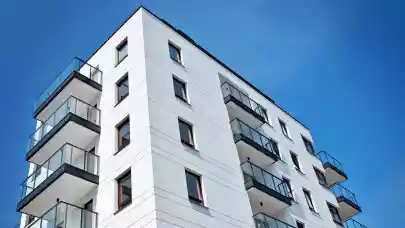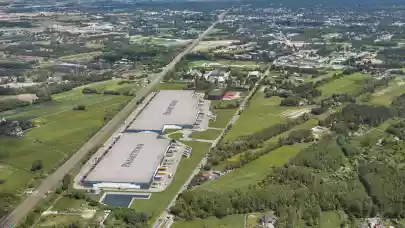
In the third quarter of this year, residential developers operating in the six largest cities in Poland sold 13,300 units, which is 94% more than in the previous quarter. In most markets, these units were sold at higher asking prices than in the second quarter. Thanks to new launches, which returned to the level seen at the beginning of 2020 of 13,000 units, the offer remained stable, according to the latest JLL report on Poland’s residential market.
According to JLL experts, the numbers describing the situation on the primary market in the third quarter of this year were not so dramatic. If you look at how the market behaved in the first, and especially in the second quarter, it could be concluded that the third quarter was pretty much a run of the mill pre-pandemic performance. Developers sold almost exactly the same number of units as they launched for sale, which means that the number of units on offer barely changed. Contrary to expectations, prices have not changed either.
“With inflation in the analysed period close to 3%, quarterly increases of 1% can be treated as a justified and moderate inflation correction. There have also been no reasons for discounts thus far. Buyer activity has almost returned to pre-pandemic levels, and the growing price index for units sold shows that they are not only accepting the price levels set by developers but also prefer units from higher-quality segments”, comments Katarzyna Kuniewicz, Head of Residential Research at JLL.
Kraków was where this trend was most noticeable in the last quarter. The launch of a large number of high-end projects in Q1 and Q2 in the city meant that the average price per square meter for units offered for sale exceeded the magic PLN 10,000 threshold. However, this did not discourage buyers who were looking for such purchases. The average price for units purchased in the third quarter was 10% higher than in the previous quarter. And all this despite Kraków having the largest increase in its offer out of all six markets.
Buying interest greater than statistics show
The fact that the number of units available for purchase remains stable is another argument that contradicts the theory that prices will inevitably fall. Apart from Kraków, no other market saw an increase in the level of the offer by more than 2%, while in Warsaw and Wrocław this pool even decreased. The number of finished unsold units is also not growing. They still account for only 11% of the offer, totalling 49,300 units in six markets. This is still very close to the share of completed units in the offer recorded during the boom, which, according to JLL data, was 10%. For comparison, during the bear market, the percentage of units completed and ready to be sold was as high as 35%.
In the last quarter, the share of returns also returned to pre-economic lockdown levels. The wave of withdrawals from commenced transactions was one of the biggest challenges for developers in the first months of the pandemic. They were most numerous in Kraków, where in the second quarter returns reached 51% of gross sales. In the third quarter, it was Warsaw that saw the highest number of returns, with 6% of gross sales. The lowest share of returns was seen in Łódź and the Tri-City, where they did not exceed 1%.
According to Paweł Sztejter, the level of returns may be higher than the data shows, but paradoxically, it proves that there is a great deal of interest in the housing market among the "new" group of buyers.
“The summer months were busy for developers, and the sales offices were much more active than the level of transactions recorded in the quarter would indicate. The returned units were almost immediately picked up by new buyers, and retail investors interested in buying to rent were replaced by those who wanted to invest their savings in real estate in these uncertain times”, says Paweł Sztejter, Executive Director, Head of Residential JLL.
Savings flowing into real estate
According to JLL experts, this new group of buyers, which is growing every month, may be important in the coming period for maintaining stability on the housing market. An important argument for their purchase is the well-established opinion of the housing market in Poland as a safe place where their accumulated capital can be secured. This applies to both individual and institutional investors. The former has over PLN 300 billion accumulated in deposit accounts alone and there is no real alternative to hedging their depreciation on the capital market. The latter is moving away from traditional sectors that have lost their attractiveness in recent times in favour of the Living sector.
“The value of the primary market in the six largest cities in Poland can be estimated today at about PLN 25 billion per year. Even if over the next 2-3 years the buy-to-let trend, as well as demand – depending on the availability of loans – will decrease by several billion zlotys annually, all that’s needed is a relatively small percentage of investors to move their savings into the housing market for the gap in demand to be filled and the market to remain balanced. To keep them interested, however, it will be important to maintain a stable price level in the coming 2-3 quarters”, comments Paweł Sztejter, Executive Director, Head of Residential JLL.




